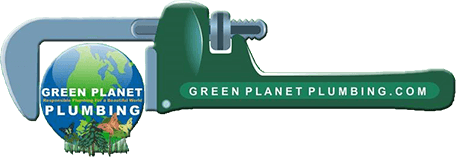According to the Environmental Protection Agency (EPA), the average American family’s water usage at home exceeds 300 gallons per day. Approximately 70% of this is indoor usage, which equates to 210 gallons or more daily. Also, bear in mind, now that many people are spending more time at home than in previous years, our home’s toilets and sinks are getting even more frequent use, so this percentage could be higher in 2020.
HOW MUCH WATER DOES THE AVERAGE HOUSEHOLD USE FOR DAILY ACTIVITIES?
How do we manage to use 210 gallons of water or more indoors in just one day? Here is a breakdown in percentages of where that daily usage occurs, according to a 2016 study from the Water Research Foundation.
Toilets: 24%
When nature calls, we must answer, and for the average adult, this occurs 6 to 7 times a day. It’s no wonder that flushing the toilet accounts for nearly a quarter of an average household’s daily water usage!
Showers: 20%
No one in your household will complain about your good hygiene (the alternative is much worse). However, spending too long in the shower can start to rack up your water usage--and your water bills.
Faucets: 19%
Considering how often we need to wash our hands to avoid illness, it’s no wonder that faucets account for the third-highest use of indoor water in most households.
Clothes Washer: 17%
Unless you own a washing machine that adjusts the amount of water it uses based on the laundry load size, your appliance will use the same number of gallons each time, whether you’re washing one pair of jeans or several.
Leaks: 12%
Watersense (an EPA partnership program) reports that 10% of U.S. households have leaks that waste 90 gallons or more daily! Some of the most common leaks include dripping faucets and toilets with an internal leak from a worn-out flapper.
Other: 8%
Other water usage can apply to sources like your dishwasher, the water you get from your refrigerator, etc.
HOW TO SAVE WATER AROUND THE HOUSE
There are multiple ways to conserve water at home to benefit the environment and lower your monthly bills. Here are some good habits and plumbing improvements to consider.
Fix Leaks (Even “Small” Ones)
According to Watersense, the average U.S. home’s leaks can account for over 10,000 gallons of wasted water annually. To put that into perspective, 10,000 gallons could wash 270 laundry loads. If you can hear your toilet running continuously or if you see a drippy faucet, don’t postpone a plumbing repair.
Use a Shower Bucket
While waiting for your shower water to get warm, collect the cold water in a bucket. You can use that water for watering plants, housecleaning, washing hand-wash-only laundry items, and shaving.
Install a Recirculation System
Think of this as the advanced alternative to the shower bucket. Instead of waiting ages for the shower water to heat up and collecting the cold water yourself, the recirculation system eliminates that wasted water for you and, even better, reduces the time you wait for hot water.
Wait for Full Loads of Laundry
Resist the urge to put just a few clothing items in your washer at a time unless your washing machine will adjust the cycle accordingly. It’s more energy-efficient and water-smart to have a “laundry day” during which you wash full loads.
Boil Less Water For Pasta
Unless you’re making a giant vat of pasta, you typically don’t need to boil as much water as the directions specify. Most of the time, you can cut the water content in half, and your pasta will still turn out fine! This reduces your water use and the energy you spend warming it to a boil.
Use Your Dishwasher
If you own a newer, energy-efficient dishwasher, you’ll save more water and energy by using it rather than washing your dishes by hand. In fact, using an ENERGY-STAR certified dishwasher will save you nearly 5,000 gallons of water annually as opposed to handwashing dishes.
Harvest Rainwater
Here in Seattle, we have no shortage of rainwater. Why not use it to help out your home and the environment? You can make DIY containers, or for a more advanced solution, contact an eco-friendly plumber.
Put Aerators In Your Faucets
Aerators reduce the water volume that comes out of your faucets by injecting the water with air. You’ll still feel that satisfying pressure while washing your hands with the added benefit of reducing what goes down the drain. To maximize water conservation, look for Water-Sense-labeled aerators.
Replace Your Plumbing Fixtures with WaterSense-labeled Products
Products must meet the EPA’s criteria to have the WaterSense label. Specifically, the products must “use at least 20% less water, save energy, and perform as well as or better than regular models” (as stated by the EPA).
For assistance with eco-friendly plumbing solutions, products, repairs, and upgrades, you can rely on our experts at Green Planet Plumbing & Sewer, LLC. Please don’t hesitate to reach out to us online or by phone at (206) 207-7625 for help.


